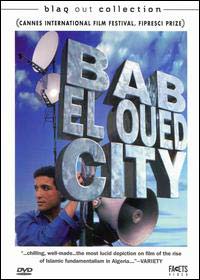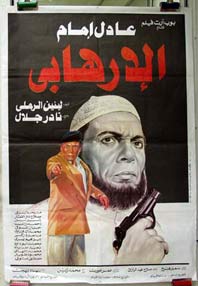


Islamism in Arab Fiction and Film: Introduction
Islamism in Arab Fiction and Film, 1947 to the Present was funded by the Arts & Humanities Research Council (AHRC) and the Economic and Social Research Council (ESRC) UK under the auspices of the Religion & Society programme. Taking account of the term's shifting, often controversial meanings, the project mapped and is now critically assessing ways in which 'Islamism' is imaginatively reflected, transmitted, critiqued and contested. It examines fiction and film in Arabic, French, and English produced by artists closely affiliated to the Arab world, from 1947 to the present.
 The rise of political movements affiliated to Islam (sometimes controversially, hence our use of the term ‘Islamism’) in the Arab world needs to be examined in relation to national, cultural, and political, as well as religious contexts of emergence. The project will examine material reflecting closely upon the North African Maghreb (Arab west), Egypt, the Levant (Lebanon, the Palestinian territories, Syria and Jordan) and the Mashriq (Arab east), as well as various Arab diasporas. In some contexts, Islamism is related to nationalism; in others, it is, at least initially, oriented against the politics of the nation state; in yet others, it is denationalized, anti-imperialist and needs to be understood in terms of complex glocal economies. Because our investigation of creative material aims to challenge totalizing and monolithic definitions of Islamism, we propose broad criteria of inclusion, identifying texts which foreground a synthesis of Islamic theology and political ideology.
The rise of political movements affiliated to Islam (sometimes controversially, hence our use of the term ‘Islamism’) in the Arab world needs to be examined in relation to national, cultural, and political, as well as religious contexts of emergence. The project will examine material reflecting closely upon the North African Maghreb (Arab west), Egypt, the Levant (Lebanon, the Palestinian territories, Syria and Jordan) and the Mashriq (Arab east), as well as various Arab diasporas. In some contexts, Islamism is related to nationalism; in others, it is, at least initially, oriented against the politics of the nation state; in yet others, it is denationalized, anti-imperialist and needs to be understood in terms of complex glocal economies. Because our investigation of creative material aims to challenge totalizing and monolithic definitions of Islamism, we propose broad criteria of inclusion, identifying texts which foreground a synthesis of Islamic theology and political ideology.
 Arab fiction and films offer compelling and – in the Anglophone world – neglected accounts of how the interface being religion and politics is being defined, who inhabits that defined space, how he/she is produced, and how he/she narrates his/her beliefs and actions to the world. The project identifies a contemporary current of work that runs contrary to what has been a prevailing secular aesthetic in the Arab world, suggesting that it is possible to combine religious belief, political commitment, and aesthetic value. Just as importantly, Arab fiction and films complicate caricatures in the Western imaginary: the ‘terrorist’ and the ‘suicide bomber’. Fiction and films illuminate imaginative life worlds, subjective experiences, and wider structures of feeling; they posit plural narrative trajectories and emplotments of history; they dramatize conflicts and project diverse resolutions; they often reflect upon themselves and, by extension, wider frames of representation; and they solicit and/or help to produce accepting or dissenting audiences.
Arab fiction and films offer compelling and – in the Anglophone world – neglected accounts of how the interface being religion and politics is being defined, who inhabits that defined space, how he/she is produced, and how he/she narrates his/her beliefs and actions to the world. The project identifies a contemporary current of work that runs contrary to what has been a prevailing secular aesthetic in the Arab world, suggesting that it is possible to combine religious belief, political commitment, and aesthetic value. Just as importantly, Arab fiction and films complicate caricatures in the Western imaginary: the ‘terrorist’ and the ‘suicide bomber’. Fiction and films illuminate imaginative life worlds, subjective experiences, and wider structures of feeling; they posit plural narrative trajectories and emplotments of history; they dramatize conflicts and project diverse resolutions; they often reflect upon themselves and, by extension, wider frames of representation; and they solicit and/or help to produce accepting or dissenting audiences.
We believe that creative texts represent valuable sites of enquiry into interrelationships between religion and society in a contemporary world in which local and global contexts are mutually informative. By foregrounding Arabic language material alongside English and French – hence engaging three major languages of the Arab world – the project aims to highlight creative engagements with Islamism by writers and filmmakers either embedded in or closely affiliated to parts of the Arab world, who do not necessarily target a Western audience.
| Conference | News | Links | Contact Us |






